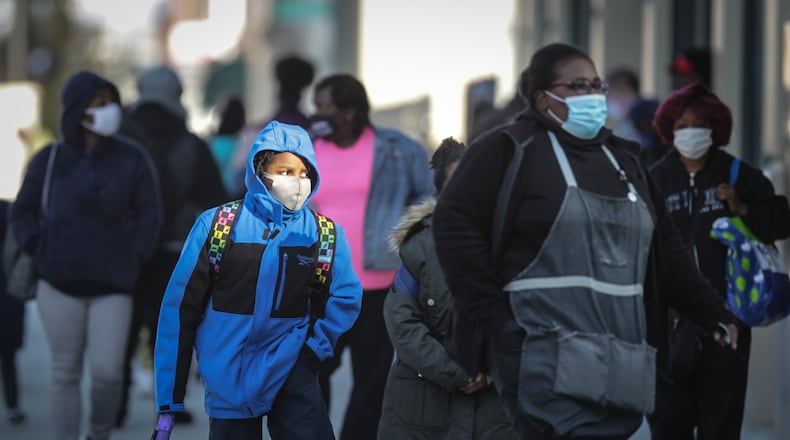“We are facing a monumental crisis in Ohio,” Ohio Gov. Mike DeWine stated Friday afternoon.
There were 2,981 Ohioans hospitalized from COVID-19 as of Friday afternoon. Two weeks ago, there were 1,662 people hospitalized.
Over the past two weeks, hospitalizations in Southwest Ohio have increased 67%, COVID-19 patients in intensive care units by 50%.
In the spring, when hospitals in places like New York and Louisiana were slammed, health workers from other areas rushed to their aid. Now spiraling case counts are creating crushing and competing demand around the U.S. for staff, supplies, lab capacity, and beds.
Aggressive and exponential spread of COVID-19 is pushing past the ability of public health tracers to warn people they’ve been infected or been near someone infected.
Several local health departments such as Warren and Clark Counties are sending out letters to people because their contact tracers are behind.
To manage the surge, Warren County has hired more contact tracers and teamed with local universities. Yet until additional resources are in place and operational for contact tracing, the health department is sending letters to people who are not able to be contacted via phone.
“The Warren County Health District (WCHD) has recently become overwhelmed with the rapid acceleration in the number of new positive COVID-19 cases being reported,” the district said in a Friday press release.
Greene County had 154 new cases Friday.
“We’re having trouble keeping up with reaching out to initial cases, and starting to have a hard time doing all of the contact tracing that is coming in with increasing cases,” Kirsten Bean, Greene County health education program manager and lead contact tracer, said
The challenges aren’t just the case load. Some people don’t pick up the phone or don’t have their voicemail, some don’t want to share their close contacts, some don’t want to comply with quarantine/isolation
“Some people have a hard time complying with the quarantine for that long because they have an elderly parent they’re taking care of or don’t have paid sick leave from their job or they’re self-employed. I’ve had a couple agricultural workers say, ‘I can’t take time off now, we’re bringing in the apple harvest,’” Bean said. “There’s any number of reasons people have trouble complying.”
She also noted that some parents are disrupted because they have to adjust their work schedules so their kids can quarantine.
“I feel like it’s getting to the point where we just need the whole public to know what the right thing to do is, because it is hard for us to get to cases and contacts in a timely manner,” Bean said. “(Issues keeping up with contact tracing) are across the region. We’re doing our best to keep up, but it requires all of us to each do our part and be as responsible if we have exposed somebody else or if we know we have been exposed to take those precautions to prevent the spread of disease.”
Bean said members of the Medical Reserve Corps had been mobilized to help the county health department.
Previously Montgomery County was seeing 50 to 60 new cases reported each day, now it’s at 200 to 250, Jeff Cooper, Public Health - Dayton & Montgomery County health commissioner said Friday as he called on residents to stay home when possible.
“That means no game day watch parties, minimal size at wedding receptions, avoiding crowded spaces, not congregating in bars, no house parties, no extended-family gatherings. That’s a very difficult message to give. But it’s a message that we all have to adhere to,” Cooper said. “We’re at the point now where we should only be leaving our homes when it’s absolutely absolutely necessary to do so.”
In the background of the rising cases is that Pfizer recently announced in a press release that its vaccine could be 90% effective based off the data it has so far.
Dr. Michael Dohn, medical director of Public Health - Dayton & Montgomery County, said even if the actual effectiveness ends up lower, this exceeds expectations. Dohn said at this point, vaccines could be available early next year to health care workers and in the months after for the general population.
“But it is going to be coming. Until then we have to do what everyone else has been talking about: continue to wear masks, wash our hands keep our distance. And that’s particularly important right now as the cases are rising very rapidly,” Dohn said.
Dohn said if people don’t feel safe, they aren’t going to go out and do activities and that he’s afraid we’re once again going to see economic repercussions because as a group we’ve failed to control the virus.
“Once we can get this under control, other things like the economic worries and the rest of it will start to take care of themselves, because people will feel safe,” Dohn said.
About the Author

